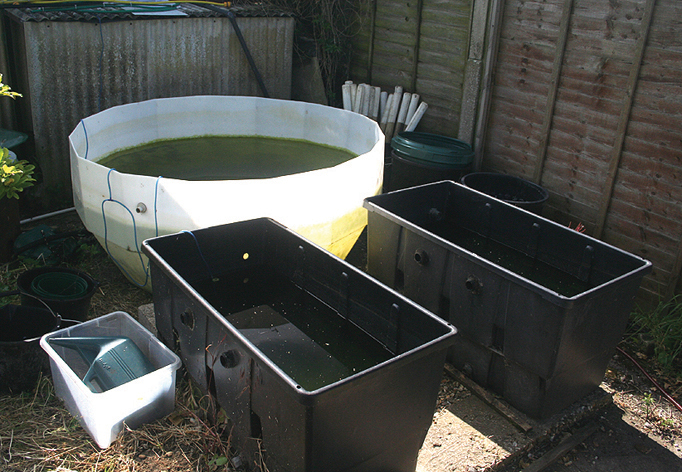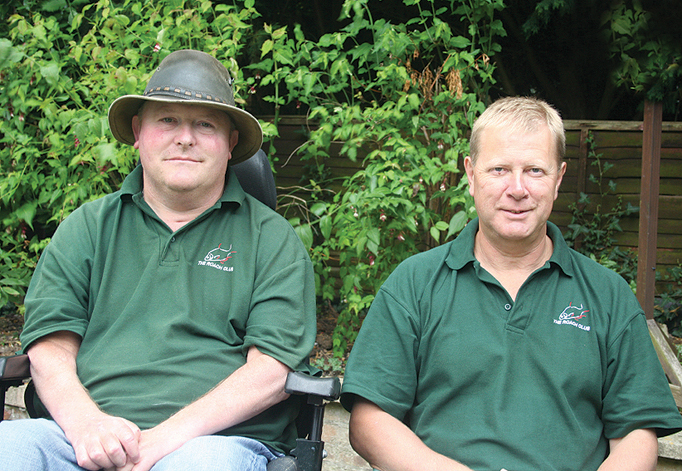|

| |
|
|
| |
 |
|
| |
Once we had the idea to start the project, the first frustration was finding a tank. We were quoted over a thousand pounds for an identical tank to the one seen in this picture. Then, it seemed the project was fated to get a flying start when a trout farm owner revealed that he had three tanks slung in a bramble thicket that he had no use for. We dashed off at the speed of light and collected two of them, as that’s all Trevor deemed he had space in his garden for.
|
|
| |
 |
|
| |
|
|
| |
 |
|
| |
Within two years the project had escalated to small fish farm proportions and is even CEFAS (Centre for Environment, Fisheries & Aquaculture Science) registered. This will enable future EA section 30’s (Fish movement and introduction consents) to continue to be obtained, as registration will be a condition of this from August 2009. This also proved that Trevor’s idea of the availability of space was knocked out of him, and words like caution and precautionary were deleted from his memory banks. This is for the Avon Roach for goodness sake.
|
|
| |
 |
|
| |
|
|
| |
 |
|
| |
With the responsibility of growing and keeping alive thousands of roach, at varying ages, came the necessity to feed them on the right food, and there is nothing better than live stuff, so a ‘Brine Shrimp Hatchery’ was a foregone conclusion. Formerly known as Trevor’s conservatory, the hatchery produces 24 bottles of shrimp every 48 hours, meaning a bottle can be fed to each tank twice a day. Each brine shrimp is a living, loaded packet of protein which also stimulates the hatchlings hunting instinct. Each bottle contains de-chlorinated water, a large spoonful of sea salt and a tea spoon of brine shrimp eggs. When hatching is complete, the cauldron of bubbles, supplied by air pumps, pipes and valves is stopped allowing the shrimps to be separated from the egg shells as these float while the shrimps sink. The shrimp-filled water is then drained from the bottom of the bottles into jugs and administered to the fish in the tanks with a turkey baster. This means the food can be evenly distributed across each tank. The salt in the water acts as a mild antibiotic, meaning the contents of each bottle contains a double hit of goodness.
|
|
| |
 |
|
| |
|
|
| |
 |
|
| |
To keep the live food production going as our roach grow, we decided to create our own Daphnia farms in an assortment of tanks, loft tanks, bins and troughs. We have enjoyed varying degrees of success with this and are still seeking the magic solution to producing a constant supply, but we are getting there and you wouldn’t believe some of the tricks we have developed and tried..... From cabbage, baby-bio and wee. |
|
| |
 |
|
| |
|
|
| |
 |
|
| |
From time to time we have daphnia blooms that would be the envy of Mother Nature herself. We seed the fry tanks prior to the spawn being introduced, and maintain a population, as the daphnia give birth to live young, the perfect mouthful for our hatchlings. Then, as the roach grow, within a few weeks, the adults are fair game.
|
|
| |
 |
|
| |
|
|
| |
 |
|
| |
Us - Budgie (left) and Trevor (right).
|
|
| |
 |
|
| |
|
|
| |
 |
|
|
| |
|
|

